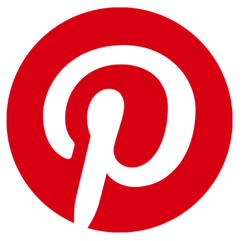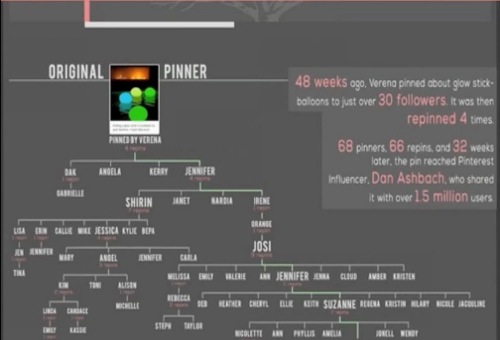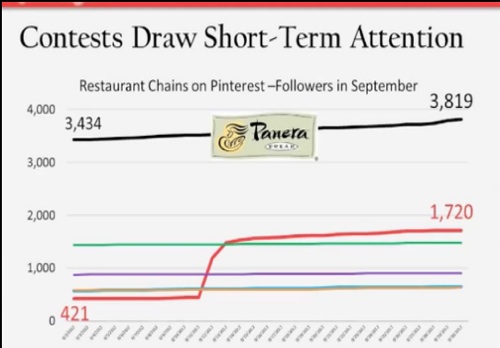Articles and News
25 Tips For Using Pinterest Successfully | May 29, 2013 (0 comments)

Pelham, NY—If you’ve mastered Facebook and Twitter, but Pinterest still confuses you, a recent Webinar hosted by the Jewelers Resource Bureau may help.
The webinar, part of JRB’s DesignerBizTalk series, featured speakers Daniel Maloney, co-founder and CEO, and Jessica Howe, accounts manager, of Pinleague, an analytics and service firm that focuses on helping clients maximize their ROI on Pinterest. Cindy Edelstein, president of Jewelers’ Resource Bureau, was moderator.
Pinleague began as a similar bulletin-board site in the bridal space, called Bridesview.com. Brides-to-be were invited to plan their wedding via images posted to the site, and they could buy products posted by other users. When the founders saw how many hits the site was getting from Pinterest, they realized their technology could help other businesses learn to market via Pinterest, so they changed the company’s focus. Today, Pinleague’s services include helping businesses to mobilize an existing fan base, attract a new fan base, managing analytics, and more.
To review, Pinterest is like a giant online bulletin board, where users “pin” things they are inspired by. Pinterest is aspirational, says Maloney. The difference between it and other social media is that Facebook says, “This is who I am,” Twitter says, “this is what I’m doing,” and Pinterest says, “this is who I want to be.”
“If a bride is looking on Pinterest to find the perfect engagement ring, you want to be on her board!” says Edelstein. “Then her friends will re-pin it and every fiancé out there knows what to buy.”
Jewelers also don’t have to be afraid of the time commitment of adding another social site, says Edelstein. “It only takes as much time as you give it. Obviously, the more you use it, the more response you will get, but it isn’t all or nothing.”
Here are 25 key takeaways from the webinar:
- Jewelers and designers should build a business profile, rather than a personal profile. Click here for instructions to get started building a business profile. Designers should position themselves as “brands,” says Edelstein. Retailers can position themselves as “retailers,” rather than “business” if they choose.
- Pin boards work the same for business as personal profiles. Set up boards in different areas of interest that may relate to jewelry, such as men’s and women’s fashion, travel to areas where gems are mined, and so forth.
- For jewelry, filing it under the categories of men’s and women’s fashion probably is the best option on Pinterest, says Maloney, because users go to a category page to see what’s hot, so it’s great if your product is there.
- The other major use of the Pinterest category pages is search. When users do a Google or Bing search, anything that’s on Pinterest comes up pretty high, Maloney says.
- Be sure your website has the Pinterest button visible and active. Click here to learn how.
- Pinterest is not for women only, says Howe. Male followers are growing rapidly. In its early days, Pinterest was targeted to women—90% of its users were female in the fourth quarter of 2011—but today only 67% of its users are female.
- Like all social media, building a relationship with your followers is important, so they see your pins and, more importantly, engage. You want users to re-pin you. Here’s an example of a pin that went viral:

The original Pin (top) went to 30 followers. It was repinned four times, which then led to 68 more pinners seeing it and 66 more repins. Eight months later, the pin reached Dan Ashbach, one of Pinterest's influencers, who shared it with 1.5 million users.
- Hypertargeting is built into Pinterest, says Howe. It’s not like Twitter, where 1% of a user’s feed is really meaningful to them at that moment. On Pinterest, users follow only what they’re truly interested in. And, the more targeted something is, the more addictive it gets for users.
- If you have a short-term contest or promotion you’re promoting through social media, don’t just remove the web page when it’s over. Rather than giving users a “404 error page not found” response, redirect them to something else.
- Know your audience. Maloney says you wouldn’t begin a traditional media campaign without knowing your target audience, and the same is true for Pinterest. Do an online search of your brand and see what’s being shared about it, who is sharing, and what users are engaging with. This will help you understand the mentality of the users you want to target.
- People are not on Pinterest to be marketed to, but they will accept marketing if you are a good faith part of the community. In other words, follow the same rules you do on other social media: some product posts are ok, but don’t make your entire presence about the products you sell. Especially in the early phases, don’t over-market but rather share interesting content about yourself. Maloney recommends Whole Foods as a good example of a retailer who does a great job of serving the user with boards of interest, not just products available in their stores.
- Your cover photos are critical. Make sure your top row of boards have beautiful photos.
- Regarding copyright issues, Maloney stresses he’s not a lawyer, but his experience is that most people post things to social media because they want it to be shared.
- For designers who worry about being knocked off, Edelstein says it’s actually quite the opposite: if you get it out there first, you establish yourself as the originator, not the knock-off.
- Study your results and optimize what’s working. Some free analytics are available from Pinleague. Just like the 80/20 rule of most of your business coming from relatively few of your customers, a handful of your boards will be generating the most re-pins and the most discussion. You can create spinoff boards from the most successful ones.
- Your cover image and your title both grab user attention. So do keywords, but Edelstein cautions the usual suspects of “diamonds,” “gold,” “jewelry,” are all the common ones that everyone in the jewelry industry uses. Choose instead things like your brand name, a stone that’s trending, and so forth.
- Retailer pins should reflect the personality of the store, says Edelstein. Are you a “girly” store? Known for your special events? Known as the experts? Create boards around those themes, such as fashion, celebrity, parties, education, and so forth.
- Don’t be uncomfortable pinning other people’s products. It’s more important to build up trust and establish your credibility. Think beyond your own walls, says Edelstein. Customers live outside your walls far more than they’re inside your walls, and your job is to bridge what’s outside your store with what’s in your store.
- “What does your customer do when he or she goes home?” asks Maloney. What kind of car does he drive? How does she decorate her home? How do they dress their kids? Do they have kids?” All this can inform you as to what type of content would appeal to these users.
- Don’t let critical mass keep you from pinning. Even if Pinterest has far fewer users than Facebook or Twitter, they’ve very engaged, so your time will not be wasted.
- The best strategy for generating ROI on Pinterest is to get people to pin on your behalf. Integrate your website and your other social media; always have a “Pin It!” button next to content that should be pinned.
- There are various tools available to integrate your Pinterest profile on your Facebook page, says Maloney. Woobox offers a free one; there are other paid tools that also are very useful.
- Beware how you use contests and charity promotions. They can have a huge impact and drive a lot of interest in a short time, but the key is keeping users engaged for the long term, which these often do not do. Steady cross-platform promotion is better for keeping users engaged long-term and for growing new users organically.

A contest can grab users' attention, but the long-term goal is steady growth, such as the Panera graph on top. On bottom, a graph showing a business before and after a contest. See how user engagement was flat, spiked during the contest, and after, while the site had a higher number of users, interest flatlined again instead of continuing to grow. A contest is fine, says Maloney, but don't stop your efforts there.
- “A contest will drive a spike but you’re ‘paying’ the user for engagement,” says Maloney. Organic growth is better.
- Often, your largest “fan” base is your email list! You can use this to drive new users to social media, but be very careful how you use it so you don’t risk having customers perceive it as spam and unsubscribe.
The webinar is archived and can be heard in its entirety. Click here for more information.
Slide images: Pinleague.com via Jewelers' Resource Bureau







